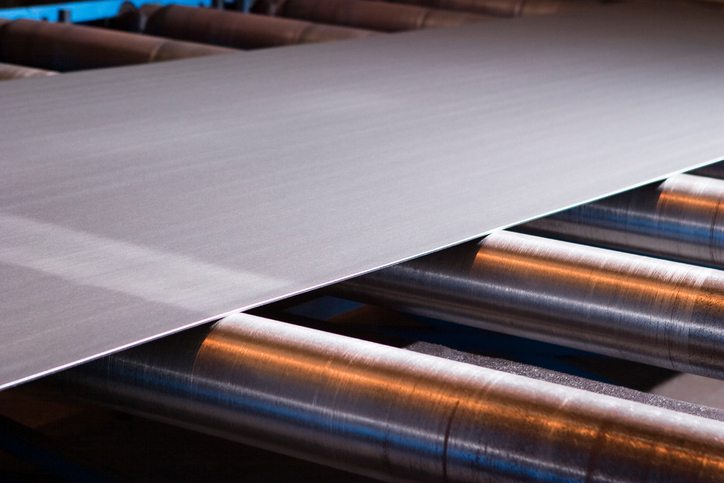The Early History of Sheet Metal

While the term titanium sheet metal fabrication often conjures thoughts of modern industry and manufacturing, the practice of sheet metal fabrication actually dates back to ancient Egyptian jewelry. Through a combination of naturally found metals and prehistoric techniques, gold and silver-workers were able to craft a form of fabrication that served as the foundation of techniques used today.
Let’s take a look back at the timeline of history to see how titanium sheet metal fabrication became the invaluable manufacturing technique it is today.
The Early Days of Sheet Metal Fabrication: 1400 – 1700
Around the beginning of the 15th century, metalworkers stopped using primordial furnaces to pile alternated layers of charcoal and iron to liquefy steel. It was also during this century that Leonardo da Vinci first sketched his idea for a rolling mill, an incredibly advanced idea for its time.
In fact, it wasn’t until the early 16th century that the first recorded reports of two rolling mills were noted by historians. One was designed to produce uniform gold sheets that were used in the creation of coins, while the other was designed to cut previously formed sheets into strips. Over 100 years after drawing his sketch, Da Vinci’s rolling mill is finally brought to life in 1590 by utilizing two heavy cylinders to press different types of metal, thereby altering thickness.
Of course, with innovation often comes failure. The beginning of the 17th century saw the invention of commonly used – but flawed – sheet metal fabrication technique puddling.
Puddling involves the heating of cast iron in reverberation furnaces until the metal becomes liquefied. One of the biggest problems with puddling was that nearly half of the iron was drawn off the slag because sand was used for the bed. The puddling process was so inefficient that it wasn’t until the mid-1800s that the technique was refined enough to produce even mild steel. Despite the limitations of puddling, the technique was still used in the creation of the wrought iron used in the construction of both the Eiffel Tower and the Statue of Liberty.
The Industrial Age of Steel Metal Fabrication: 1700 – 1900
Around 1717, manufacturers started to produce cast iron by using pit coal as their primary heating source. This technique allowed for the creation of more complex shapes like rails, squares, rounds, and double-T beams.
The Industrial Revolution 40 years later saw a huge surge of in the demand for sheet metal work. With the development of new inventions like the press brakes and assembly line, sheet metal workers were able to increase production of higher quality parts. In 1770, Swiss engineer Jean Pierre Droz successfully perfected the sheet metal process, allowing for the simultaneous production of singing, reverse, and obverse.
As the innovations continued to roll along, the beginning of the 19th century saw the invention of the steam and aluminum hammers, leading the start of a new age in iron production. By 1857, the Bessemer converters becomes the first inexpensive process to that allows for the mass production of steel from cast iron.
As technology advanced, so too did industry. In 1861, the merger of multiple unions, including the General Tramping Union of Tinplate Workers, leads to the founding of the General Union of Braziers and Sheet Metal Workers in the U.K. and Ireland.
The Future Appear Bright
While the sheet metal industry continues to grow over time from simple sketch to a billion dollar industry, our team at APIAMS will continue to honor the tradition of innovation and quality that has long been a part of this proud industry. The future of titanium sheet metal fabrication techniques, technology, and projects is incredibly exciting, and our team at APIAMS cannot wait to be part of such an incredible industry.
